Red-chested Flufftail
Posted: Wed Dec 19, 2012 9:56 pm
217. Red-chested Flufftail Sarothrura rufa (Rooiborsvleikuiken)
Order: Gruiformes. Family: Sarothruridae
Description
16 cm. A small compact bird with short, rounded wings and a slender bill. All-black body, wings and tail.
The male has a rufous head and lower breast. Rest of plumage black with narrow white streaks and small white spots on the tail.
The female’s colouration is dark brown above, spotted or lightly barred buff, brown below scaled and barred buff, with whitish throat and belly.
Immature resembles female, but plainer and darker.
Similar species: In flight it is distinguished from Striped Flufftail by its black. Striped Flufftail Sarothrura affinis has an all-chestnut tail (in both sexes). Also similar to Buff-spotted Flufftail, but re coulouring of the Red-chested Flufftail male extends onto mantle and lower breast. Female is much darker, but paler on throat.
Taxonomy
There are three subspecies:
S. r. bonapartii - Sierra Leone to Gabon and Congo
S. r. elizabethae - C African Rep. to ne DRC, Ethiopia, Uganda and w Kenya
S. r. rufa - Central Kenya to s DRC, Angola and South Africa
Distribution
Occurs in patches of sub-Saharan Africa, from Sierra Leone to Ethiopia south to southern Africa. In southern Africa it is locally common in northern Botswana, the Caprivi Strip (Namibia), Zimbabwe, central and southern Mozambique and eastern and south-western South Africa.
Habitat
It generally prefers marshy, freshwater habitats with permanently dense cover, such as swamps, wet grassland, vleis, marshes, streams, lakes, ponds, dams and rivers with dense riparian vegetation.
Movements and migrations
Adults are largely resident, making local movements in the non-breeding season, while juveniles disperse from their parents' territories after becoming independent.
Diet
It forages on the ground, probing the mud and vegetation in search of prey. Its diet consists predominantly of invertebrates such as earthworms, small gastropods, spiders, adult and larval insects (e.g. termites, small ants, Diptera, aquatic and terrestrial Hemiptera, and Coleoptera) and crustaceans (e.g. amphipods). Grass seeds may also form part of diet during the non-breeding season.
Breeding
Monogamous, territorial solitary nester with a life-long pair bond, although males may force copulation with other females in the breeding season. The nest is built solely by the female, consisting of a cup of grass or dead plants, sometimes with a partial canopy or dome made of live stems. It is typically placed in clump of grasses such as wild rice (Oryza perennis) and Bedding grass (Pennisetum macrourum), often waterlogged at the edge of marshy areas. Egg-laying season is from September-May. It lays 2 or 3 oval, white eggs, which are incubated by both sexes for about 14-18 days, with the male taking the day shift while the female incubates at night. The chicks leave the nest within 2-3 days of hatching, brooded regularly under the wings the female, with both parents feeding them on insects and other invertebrates. They typically become independent at about 3-4 weeks old, taking their first flight 2-3 weeks later, although they may solicit food from the parents for some time after this.
Call
Its call is a low far carryingooouup-oooup and a klee-klee-klee-klee.
Status
Fairly common resident.
Order: Gruiformes. Family: Sarothruridae
Description
16 cm. A small compact bird with short, rounded wings and a slender bill. All-black body, wings and tail.
The male has a rufous head and lower breast. Rest of plumage black with narrow white streaks and small white spots on the tail.
The female’s colouration is dark brown above, spotted or lightly barred buff, brown below scaled and barred buff, with whitish throat and belly.
Immature resembles female, but plainer and darker.
Similar species: In flight it is distinguished from Striped Flufftail by its black. Striped Flufftail Sarothrura affinis has an all-chestnut tail (in both sexes). Also similar to Buff-spotted Flufftail, but re coulouring of the Red-chested Flufftail male extends onto mantle and lower breast. Female is much darker, but paler on throat.
Taxonomy
There are three subspecies:
S. r. bonapartii - Sierra Leone to Gabon and Congo
S. r. elizabethae - C African Rep. to ne DRC, Ethiopia, Uganda and w Kenya
S. r. rufa - Central Kenya to s DRC, Angola and South Africa
Distribution
Occurs in patches of sub-Saharan Africa, from Sierra Leone to Ethiopia south to southern Africa. In southern Africa it is locally common in northern Botswana, the Caprivi Strip (Namibia), Zimbabwe, central and southern Mozambique and eastern and south-western South Africa.
Habitat
It generally prefers marshy, freshwater habitats with permanently dense cover, such as swamps, wet grassland, vleis, marshes, streams, lakes, ponds, dams and rivers with dense riparian vegetation.
Movements and migrations
Adults are largely resident, making local movements in the non-breeding season, while juveniles disperse from their parents' territories after becoming independent.
Diet
It forages on the ground, probing the mud and vegetation in search of prey. Its diet consists predominantly of invertebrates such as earthworms, small gastropods, spiders, adult and larval insects (e.g. termites, small ants, Diptera, aquatic and terrestrial Hemiptera, and Coleoptera) and crustaceans (e.g. amphipods). Grass seeds may also form part of diet during the non-breeding season.
Breeding
Monogamous, territorial solitary nester with a life-long pair bond, although males may force copulation with other females in the breeding season. The nest is built solely by the female, consisting of a cup of grass or dead plants, sometimes with a partial canopy or dome made of live stems. It is typically placed in clump of grasses such as wild rice (Oryza perennis) and Bedding grass (Pennisetum macrourum), often waterlogged at the edge of marshy areas. Egg-laying season is from September-May. It lays 2 or 3 oval, white eggs, which are incubated by both sexes for about 14-18 days, with the male taking the day shift while the female incubates at night. The chicks leave the nest within 2-3 days of hatching, brooded regularly under the wings the female, with both parents feeding them on insects and other invertebrates. They typically become independent at about 3-4 weeks old, taking their first flight 2-3 weeks later, although they may solicit food from the parents for some time after this.
Call
Its call is a low far carryingooouup-oooup and a klee-klee-klee-klee.
Status
Fairly common resident.
 © PRWIN
© PRWIN
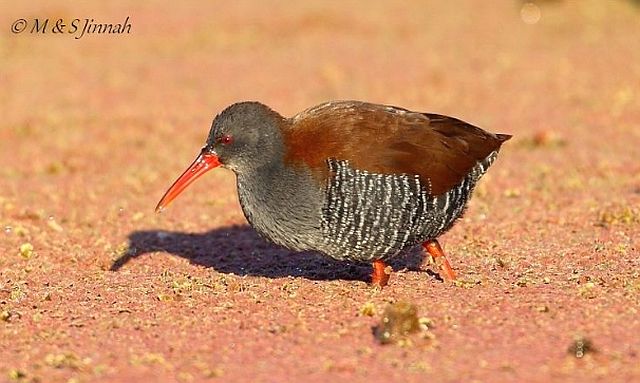
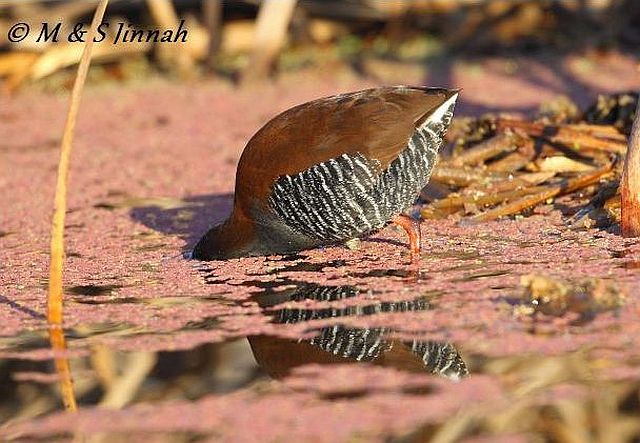
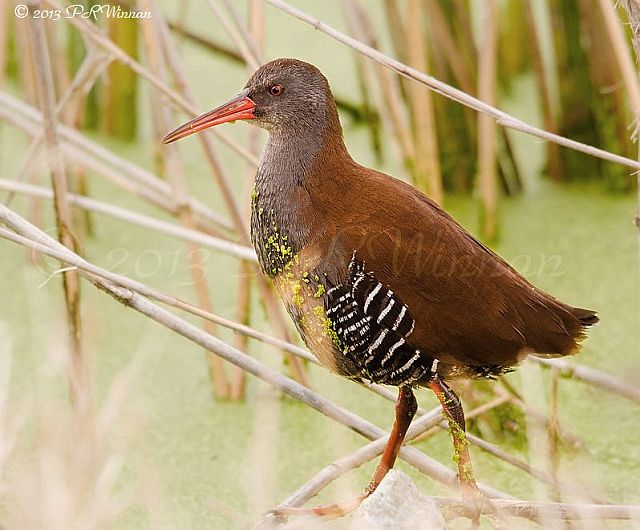 © PRWIN
© PRWIN
 © Flutterby
© Flutterby
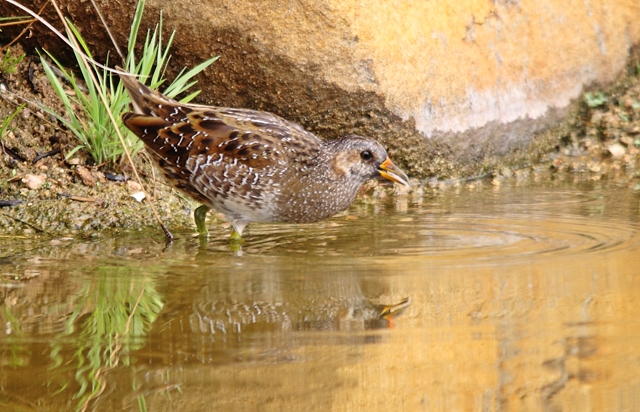
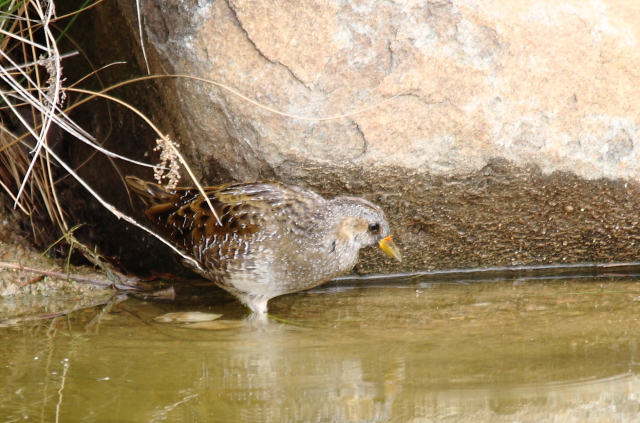
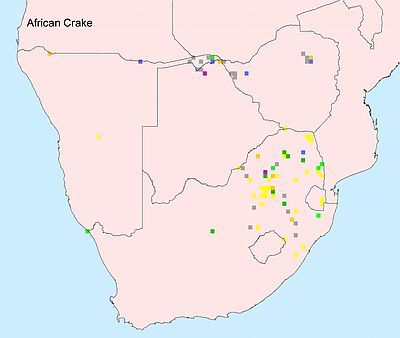
 © Guinea Pig
© Guinea Pig